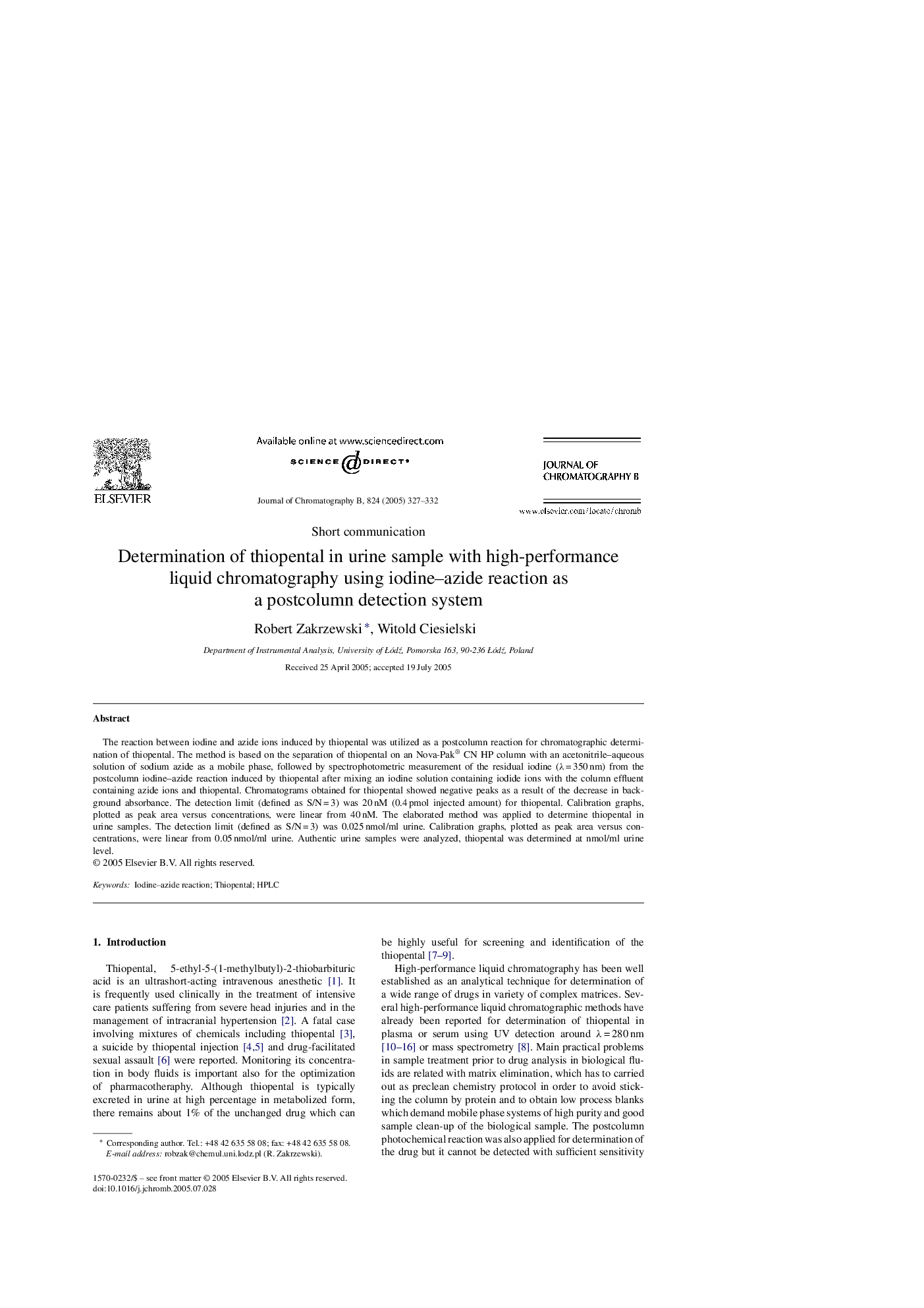| Article ID | Journal | Published Year | Pages | File Type |
|---|---|---|---|---|
| 9753265 | Journal of Chromatography B | 2005 | 6 Pages |
Abstract
The reaction between iodine and azide ions induced by thiopental was utilized as a postcolumn reaction for chromatographic determination of thiopental. The method is based on the separation of thiopental on an Nova-Pak® CN HP column with an acetonitrile-aqueous solution of sodium azide as a mobile phase, followed by spectrophotometric measurement of the residual iodine (λ = 350 nm) from the postcolumn iodine-azide reaction induced by thiopental after mixing an iodine solution containing iodide ions with the column effluent containing azide ions and thiopental. Chromatograms obtained for thiopental showed negative peaks as a result of the decrease in background absorbance. The detection limit (defined as S/N = 3) was 20 nM (0.4 pmol injected amount) for thiopental. Calibration graphs, plotted as peak area versus concentrations, were linear from 40 nM. The elaborated method was applied to determine thiopental in urine samples. The detection limit (defined as S/N = 3) was 0.025 nmol/ml urine. Calibration graphs, plotted as peak area versus concentrations, were linear from 0.05 nmol/ml urine. Authentic urine samples were analyzed, thiopental was determined at nmol/ml urine level.
Keywords
Related Topics
Physical Sciences and Engineering
Chemistry
Analytical Chemistry
Authors
Robert Zakrzewski, Witold Ciesielski,
